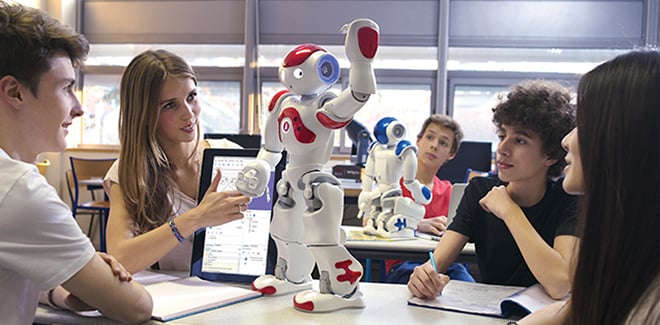
Diligence, a curious spirit, and perseverance are qualities we desire to see in our students. These traits are elements of the “growth mindset.” Teaching students coding presents one of the best opportunities to develop and nurture kids’ growth mindset in the school setting. This article shows five scenarios to support this position.
1. Students recognize that different paths lead to a favorable outcome.
When students embrace coding, they encounter challenges that cause them to get creative and try several approaches to search for a solution. For example, split a class into teams and ask them to program robots to navigate a maze. After the exercise, they should intermingle with students from other groups to exchange their experiences and outcomes. Different groups often discover that although their coding protocols were diverse, they arrived at the right product. Understanding that life is not a one-way street can rub off positively on their academic pursuits. It will teach these students to have faith in their methods, even when it seems distinct from those of their associates.
2. Students are sensitized to appreciate the process and not just the outcome.
Coding is not a walk in the park for beginners. During this process, they realize different modes for interacting with their associates and robots too. As these students discover unique ideas and propose modifications to the code, they will explain their colleagues’ reasons behind ideas. While explaining the reasons behind their approach, they may even orally take their audience through their project to inspect for errors before they reach the testing stage. This activity is a significant part of the coding process for kids.
When students are allowed to figure out methods that produce results for them, they realize that satisfaction is in the process. The outcome is getting a robot to move across different points, but the procedure of stringing together the codes that direct the robot’s movements is the fun part. This consciousness for the value of methods can spill over to all other learning spheres and is rewarding in the long term.
3. It highlights the importance of revision in the learning process.
The habit of attempting to get it right at the first try can stifle risk-taking and learning. And to develop a growth mindset, you must be willing to go over your initial draft repeatedly. Despite the significance of risk-taking in education, students are not eager to embrace it. Coding changes all of that; it teaches the pupils to see failed attempts as just challenges that they should tackle like a puzzle.
Over time, they hone this skill of “trying things out” without the fear of making mistakes, and it enables them to explore the depths of their creativity in a quest for success. Whereafter, they come back to revise their work for any errors. Student coders are very keen on revisions, so imagine if they are motivated to make revisions to their school work as much as their codes.
4. It equips the students on how to express and react to criticisms.
Developing a growth mindset involves acknowledging the significance of criticism. Coding affords instructors sufficient opportunities to critique their students’ work and even more significant peer-assessment opportunities.
Advise your students not to be brash in their critiques; instead, they should express their criticisms with courtesy. Before they start, it is advisable to set protocols that will guide them through the process of giving useful reviews.
5. Coding emphasizes the essence of partnership.
On a coding task, students realize that no man is an island. They learn the importance of a team and that they can achieve more through collaboration. Teaching coding is a pleasant task because you don’t have to force friendships; the students bond naturally, and groups develop seamlessly. Even when they encounter challenges, they learn to find answers as a group and stick together.
Another effect of this partnership is that other kids gain inspiration from the success of their peers. There are just not many disciplines that teach soft critical skills as coding and robotics do.


